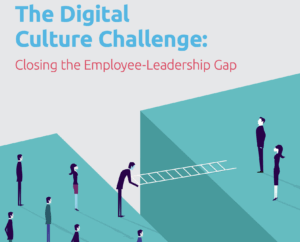
Photo by Amanda Dalbjörn on Unsplash
TechRepublic’s Macy Bayern covered the release of Frost & Sullivan’s latest analysis, “Top End User Priorities in Digital Transformation, Global, 2019.”
To add expert perspective to these important trends, Bayern reached out to digital analyst and futurist Brian Solis.
The article features highlights from their excellent conversation. The unabridged transcript of their discussion is here.
The retail (44%) and transportation (43%) industries are leading the pack in digital transformation.
“Frost & Sullivan define digital transformation in a very traditional sense, which emphasizes the ‘digital’ side of change. Retail and transportation are among the most important sectors in the economy,” said Brian Solis, digital analyst and futurist.
“Retail is under tremendous pressure to update and upgrade systems because of what I call ‘digital Darwinism,’ the effects of technology on rapidly evolving markets and also the digital evolution of customer behaviors and expectations,” Solis said.
“The same is true for transportation. Across most transportation industries, the movement of people and products is vital, yet much of the infrastructure is legacy-based, i.e. outdated. Digital transformation is a critical enabler of not only modernization but also performance, security and scale,” Solis said. “Everything is accelerating and will do so whether organizations keep up or not. This is why disruption is so pervasive. It has no agenda.”
Sales and marketing teams can use this data to better cater to their audience.
“Early in my research, 2012 to 2015, CMOs were leading digital transformation because of the rapid evolution of customer behaviors. Social media, mobile devices, popular apps and services, transformed how customers go through the journey and make decisions,” Solis said.
“CX immediately rose to the top of the investment list, compelling CMOs to rapidly upgrade customer-facing touchpoints and also back-end systems to integrate and personalize experiences,” Solis said. “This forced IT to expand its role in digital transformation to partner with CMOs and integrate technology investments across marketing and other corresponding functions.”
Companies are all too familiar with Malware, as it has been a top cybersecurity threat for years.
“Malware is not new, but it is more potent at scale,” Solis said. “A new generation of security leadership and capabilities is needed. Threats are becoming more sophisticated and so is technology to defend against them.
“Many weaknesses, however, are still human. Security and digital literacy always struggles to keep up with employee awareness and their digital habits (good and bad),” Solis said. “Digital transformation creates new capabilities in work, but also exposes new opportunities for threats that create a security gap between literacy, cybersecurity and employee practices.”





Leave a Reply